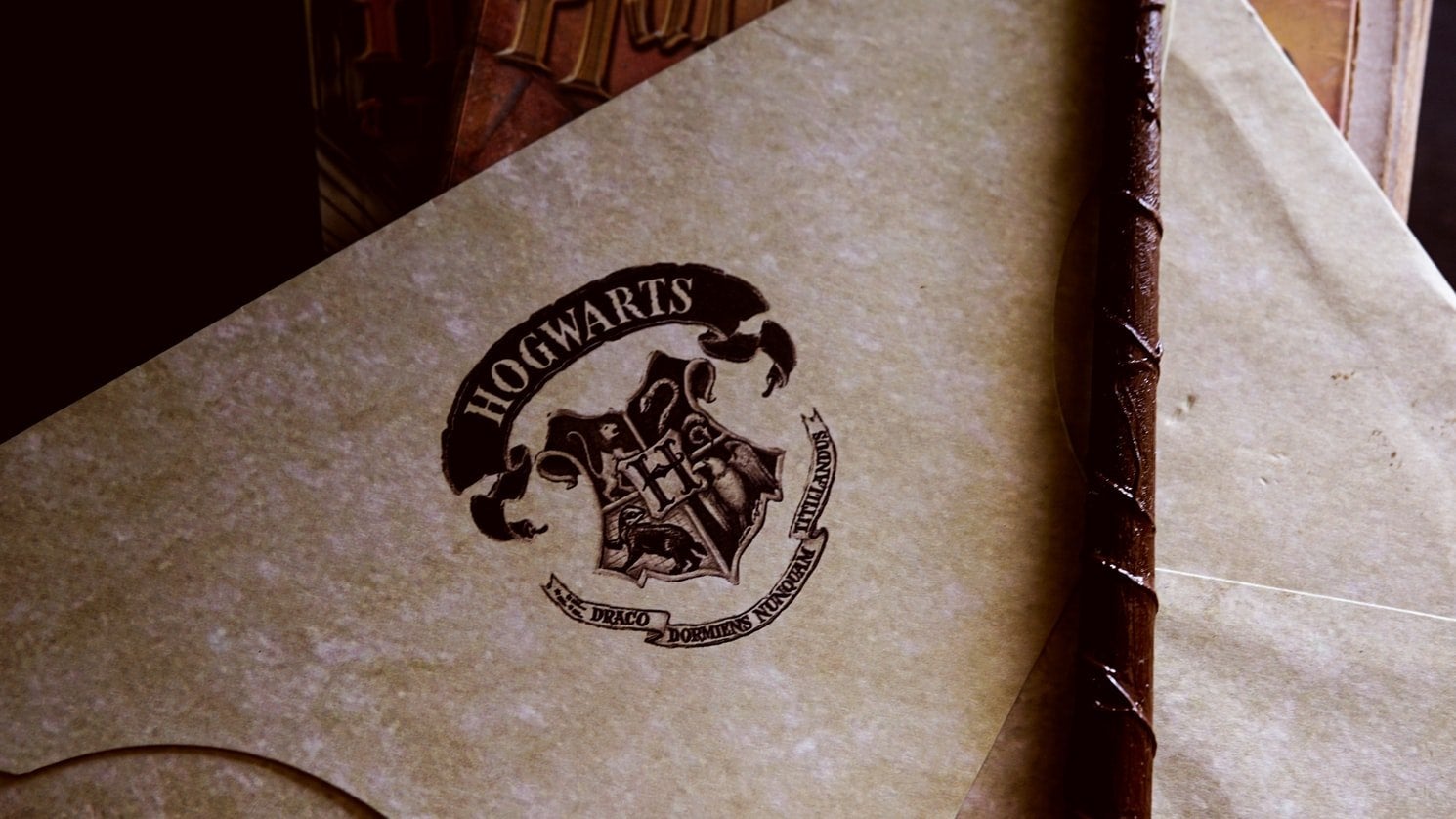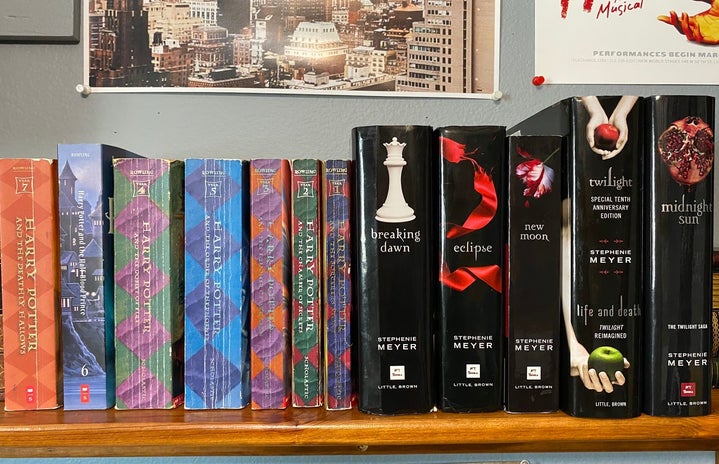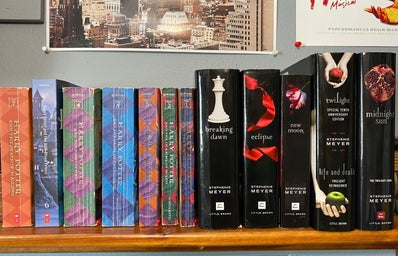Since I started college, I’ve been asked to read the works of some… questionable authors. Some, like Bret Easton Ellis, didn’t get a disclaimer. I read one of his books and then started lapping them up, only to come to a grinding halt when my professor said in class that he read Ellis’ most recent book White and was disappointed that Ellis villainized minorities facing systemic oppression and said he doesn’t care about politics. In another class, my professor assigned us a short story by Sherman Alexi, following, “This is one of my favorite short stories, written by a brilliant writer,” with “I guess I should say, in the height of the Me Too movement, a couple women named him.” We’re still studying and reading authors like Charlotte Perkins Gilman and H.P. Lovecraft, and the argument when people say we should move past studying them is, “You should be able to separate the author from the story.” But can we?
Other, perhaps more popular examples are the Harry Potter series by JK Rowling and the Twilight series by Stephenie Meyer—books many of us fell in love with as children. Now, Harry Potter fans have to deal with Rowling openly being a TERF (trans exclusionary radical feminist) while Twilight fans rereading the books for the first time in years are noticing the prevalent racism in the Twilight universe. Despite this, many young adults find it difficult to completely separate themselves from the Harry Potter and Twilight stories. We grew up with these stories, reread them or rewatched the movies on bad days, and hold these characters close to our hearts. Fans have called to separate the stories from the author—in the case of JK Rowling going so far as to try to erase her completely, saying Daniel Radcliffe or beloved character Hermione Granger wrote the series. But even if we stop supporting the authors altogether by pirating the books or only buying used books to keep our money away from the authors, we will never be able to completely separate the stories from the author.
I grew up as a Twilight kid. I started reading the books when I was in second grade and saw the movies as soon as they came out, sometimes multiple times in theaters. The only midnight showing I’ve ever been to was when Eclipse came out in 2010. I’ve read Twilight ten times, Breaking Dawn seventeen times, and New Moon and Eclipse somewhere in between those two numbers. As a kid, I saw the story as vampires versus werewolves, featuring my favorite love triangle to date. I didn’t see how Meyer gave all the negative traits to the Native character, or how Bella and Rosalie fighting the rest of the family to allow Bella to carry out her pregnancy to term (even though the doctor told her it would kill her) was aggressively pro-life. With the Twilight renaissance, fans have started criticizing the themes we couldn’t understand as kids. Jacob, the Quileute boy (and the only Native character important to the plot) who kisses Bella without her consent; refuses to accept her explicitly rejecting him on multiple occasions; emotionally manipulates Bella by threatening to get himself killed in Eclipse; has anger issues and isn’t safe to be around because if he loses his temper, he could phase and accidentally hurt or kill Bella; imprints on a baby the second she is removed from her mother’s womb and will act as her protector until she is physically mature enough to be his lover (this one is so gross; Meyer thought she could get away with this relationship because Renesmee would be physically mature around the time she turned seven—never mind the fact that she would still only be seven).
Oppositely, the white vampire family is Bella’s endgame. She repeatedly expresses how amazed she is by how perfect Edward is, how he can do everything so effortlessly, how unbelievably beautiful he is, etc. Some fans have called Edward and the rest of the Cullen family white saviors, and I’m not sure if I would go that far, but I do know this: Jasper fought for the confederacy and remains proud of it throughout the series (2005-2007). Rosalie had her autonomy taken away (all she wants in life is a baby, but being a vampire made that impossible), so when Bella gets pregnant, Rosalie doesn’t care that the baby is going to kill Bella because that means that she can keep the baby for herself, making her murderously pro-life. The Cullen family is far from perfect.
Moving into the movie realm, Stephenie Meyer fought to keep all the main characters white. When Twilight director Catherine Hardwick pushed to have a diverse Cullen family, Meyer flat out rejected the idea. In an interview in 2018, Hardwick said, “I wanted all the vampires, I wanted them all—Alice, I wanted her to be Japanese! I had all these ideas. And she just could not accept the Cullens to be more diverse, because she had really seen them in her mind, she knew who each character was representing in a way, a personal friend or relative or something.” Hardwick remembers Meyer referring to her books as a way to prove to Hardwick that it would be impossible: “She said, I wrote they had pale glistening skin!” Hardwick fought to have Laurent, one of the three antagonistic vampires at the end of the first Twilight movie played by Kenyan American actor Edi Gathegi because Laurent’s skin was described as “olive.” Meyer also allowed a couple of Bella’s friends to be people of color, which gave us Christian Serratos as Angela, Justin Chon as Erik Yorkie, and Gregory Tyree Boyce as Tyler Crowley.
Plenty of fans have recognized this and put the blame on Meyer rather than the characters, which is their way of separating the story from the author. People have rewritten the story (can you tell I love fanfiction yet?) to redeem the characters in their eyes and the eyes of others. But at the end of the day, as much as we love Jacob and Jasper, Meyer still wrote Jacob to be a child groomer and Jasper to be a proud confederate soldier. No amount of fanfiction writing or discussion is going to make it any less canon.
JK Rowling has been a lot more vocal, taking to Twitter to share her transphobic beliefs. Her most recent novel, Troubled Blood, written under her alias Robert Galbraith, is about a cisgender man who dresses up as a woman to kill his victims. After the Harry Potter series was completed, Rowling tried to say that Dumbledore was gay and had a super intense sexual relationship with Grindelwald, despite the fact that Dumbledore being gay wasn’t even hinted at during the series. This opened the floodgates to all the things Rowling notoriously tried to add to the Harry Potter world after the series ended. Next was that Remus Lupin’s werewolf condition was actually a metaphor for HIV/AIDS—she seemed to forget that the werewolf who turned him, Fenrir Greyback, preferred to prey on children. Since HIV/AIDS effects gay men at higher rates than any other group of people, fans have been quick to note the comparison of gay men as predators. The list goes on.

The goblins guarding the wizard bank are considered inferior by most of the wizarding world. Hook-nosed and highly intelligent, goblins were outcasted by wizards because of their appearance and historically unfriendly demeanor. The only reason goblins have any respect in the wizarding world is because they are good with money, and therefore guard and run the bank—in short, a hurtful, historical caricature of Jewish people. Then there are the house elves, an enslaved species who are incredibly fearful of their masters. Hermoine is the only person in the series who thinks the house elves should have autonomy, but when she verbalizes this, she’s treated as a joke and openly laughed at. Harry manages to free Dobby in The Chamber of Secrets, but to repay Harry, Dobby becomes a faithful servant, at his beck and call. Dobby loves working for Harry, which is seen much more in the books than in the movies. After he is freed, Dobby lives and breathes to help Harry and his friends. Next is the wicked Rita Skeeter, a lying, shameless journalist who twists Harry’s every word in The Goblet of Fire. Rowling describes Rita as manish and fake, almost as if she is trying too hard to be feminine. Rowling has previously favorited tweets about how “no fox has the right to live in a hen house, even if he identifies as a hen,” and then wrote about how Rita Skeeter is an illegal animagus (meaning she can transform her body into a beetle at will) to better spy on the subjects of her journalism.
This doesn’t mean we can’t continue to love and read and watch Twilight and Harry Potter. Many of us grew up with one or both of these stories, and removing them from our lives would be incredibly painful. Especially with Harry Potter, these books taught us the values that allow us to see the flaws in the books and the women who wrote them. But screaming “death to the author” will never allow us to actually separate the books from the authors because the books are a product of the author and their beliefs. As we continue to love these stories, we are responsible for ensuring the safety and wellbeing of the people most harmed by the authors and their texts, especially the Quileute tribe and trans women. We don’t need to center every conversation we have about Twilight or Harry Potter around the harm the authors have caused, but it’s important that we’re aware of it and make sure that, moving forward, we don’t continue that harm.



